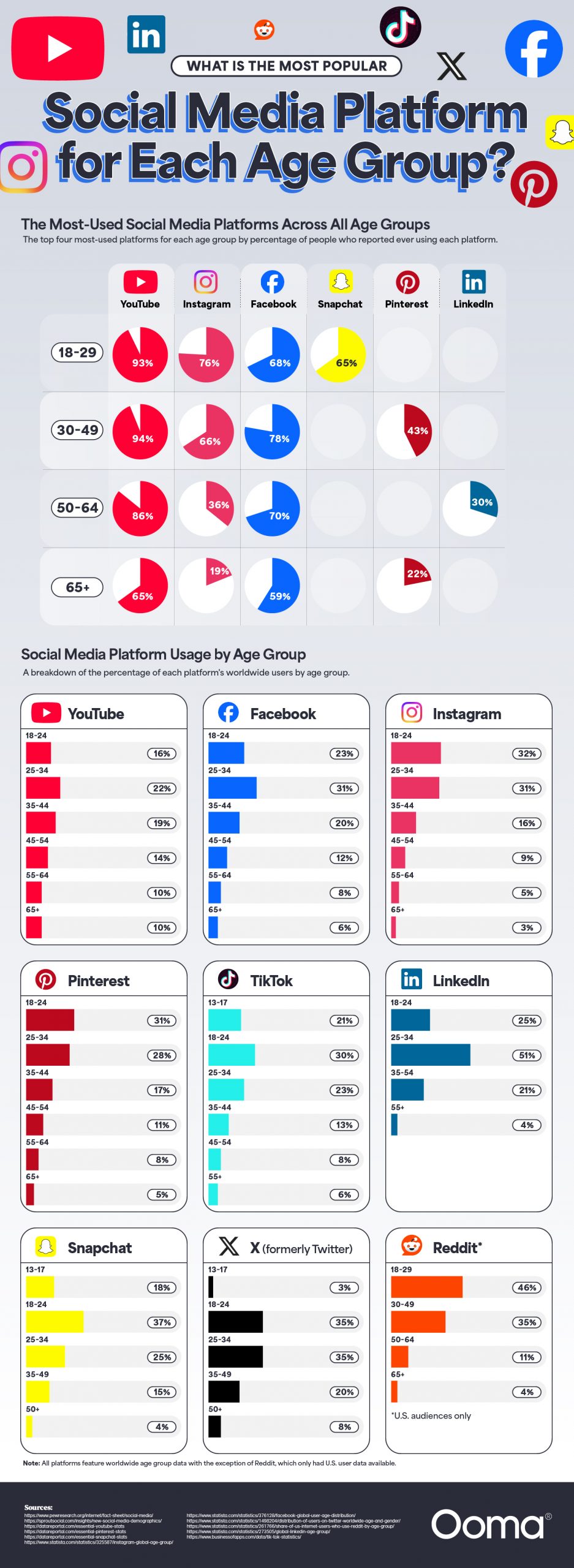Charts
The One With the Most Talkative Friend in Every Friends Episode
Even though the series finale of popular American TV show Friends aired more than 16 years ago, the show still has a fan base of both old and new viewers. In addition, after years of anticipation, the entire cast is set to reassemble this year for a reunion special to honor the iconic show’s 25th anniversary.
Reddit user u/randomo_redditor created a heat map titled “Who is the Most Talkative Friend?” that analyzes which Friends character speaks the most in each episode by calculating word count.
Click below to zoom
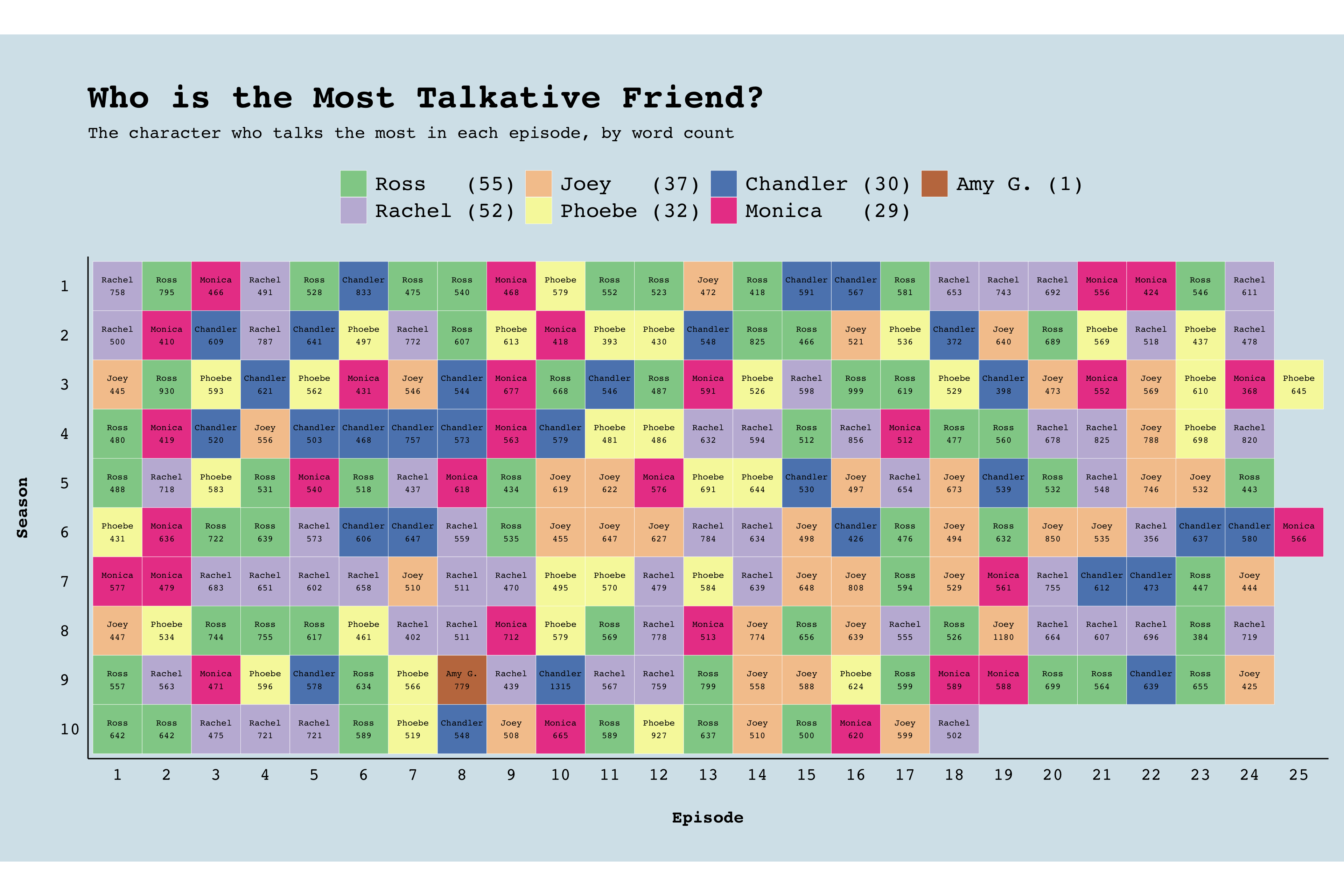
The visualization provides a color-coded guide to which Friends cast member spoke the most words during each of the 236 episodes. Leading the pack is Ross Gellar, a paleontologist and the on-again-off-again love interest of Rachel Green. He was the most talkative cast member in 55 episodes, which is more than 23% of the total episodes.
Of the six main cast members, last on the list is Ross’s sister Monica Gellar. She was the most talkative cast member in 29 episodes, which is just 12% of the total number of episodes. In order for all six main cast members to have equal share, they would have to be the most talkative character in about 39 episodes of the show.
This is how all six main cast members rank:
- Ross (55 episodes)
- Rachel (52 episodes)
- Joey (37 episodes)
- Phoebe (32 episodes)
- Chandler (30 episodes)
- Monica (29 episodes)
Rachel’s sister Amy was the most talkative cast member in the eighth episode of the ninth season titled “The One With Rachel’s Other Sister”.
Which of the Friends cast members’ placement on the list is most surprising to you?
Charts
Study Reveals How Age Shapes Social Media Preferences
Social media platforms connect billions of people worldwide every day, but these platforms aren’t uniform. They’re diverse micro-societies reflecting different age groups at different rates. Ooma’s new infographic analyzes social media usage patterns to deliver insights about generational preferences and a picture of the digital landscape’s influence on information spread.
The Ooma team used data from the Pew Research Center’s Social Media Fact Sheet and other reputable sources of social media demographics. Their approach gives us domestic and global information on platform usage numbers, which is valuable for researchers, marketers, and the digitally curious.
Click below to zoom.
A stand-out finding is YouTube’s enormous popularity across all American age groups. The platform brags 93% usage among 18–29-year-olds, 94% among 30–49-year-olds, 86% among 50–64-year-olds, and 65% among those 65 and older. YouTube is so widely used that it’s the second-largest search platform after Google. Anyone who wants quick video results can turn to YouTube to ask questions, but more than that, it’s a source of entertainment and education, too. With something for everyone, it’s no wonder YouTube is universally popular.
Facebook offered us some surprising data. It’s usually considered a platform for older generations, but the data defies this stereotype and shows us a platform with cross-generational appeal. 68% of people between 18 and 29 reported Facebook usage, and 78% between ages 30 and 49 did too. These numbers among younger people are nothing to sneeze at. Facebook has over 3 billion users worldwide, with a user base that clearly encompasses more than baby boomers and Generation X. Facebook’s staying power is impressive given the rise of up-and-coming apps like TikTok and Snapchat.
While YouTube and Facebook enjoy universal appeal, the infographic does reveal some age-based patterns for certain platforms. TikTok is certainly popular among younger users, with 59% of people aged 18 to 29 reporting that they use it, and only 10% of users over 65. TikTok’s user base tends to be young worldwide, with 30% of its users aged 18 to 24, and 21% between 13 and 17.
LinkedIn skews much older with usage peaking among 50- to 64-year-olds. This is no surprise as LinkedIn is primarily a professional platform made for business connections rather than entertainment or social sharing.
The data also reflects major shake-ups in a social media company that affect user bases. X, formerly known as Twitter, lost 2.7 million active users in just two months in December of 2024 after actions taken by CEO Elon Musk. The platform seems most geared toward people between 18 and 34, who comprise 34% of the user base.
These patterns show how age groups can affect social media usage and suggest what aspects of a platform attract different groups. The findings underscore how important it is for platforms of all kinds to adapt to changing culture and demographic needs or risk being left behind as exciting new platforms rise to take their place.
Charts
New Study is the Ultimate Guide to Snowbird Destinations
Many people find winters to be intolerably brutal, especially older people who have chronic aches and pains. The solution for many is to migrate south like the birds to soak in warmer weather and sunshine. Hence the term “snowbird!” Snowbirds escape the dreary northern weather months for the American Sun Belt. But there are many options in terms of states and counties to live in. That’s where a new study from the Florida Rentals team comes in. They created a careful analysis based on, first of all, weather, but also other important factors like cost of living and age demographics.
The study analyzed all 50 states and applied its scoring system to them. In the highest-scoring states, the team also scored specific counties in those states. The methodology weighed the weather the most heavily.
Click below to zoom.
Florida Has a Slam Dunk Snowbird Score
Florida took a healthy lead in snowbird scores, which comes as no surprise since it’s known as a snowbird paradise. The state scored 88.19 out of 100 thanks to sunshine and warm temperatures year-round, fairly low taxes, and a high population of people over 65. The Sunshine State population is 21.6% over 65, and the average winter temperatures are 59.4 degrees, and of course, no snow. These conditions draw around a million snowbirds to Florida every year, enough to increase the state population by 5% in the winter months.
As for other high-scoring states, another southern state rich in beaches, South Carolina, comes in second at 85.91 points. It’s followed by New Mexico and Arizona, both desert states, scoring 84.41 and 84.19, respectively. New Mexico and Arizona have the added bonus of low humidity, a great soother to people with chronic pain conditions like arthritis.
Choosing the Best Snowbird Counties
Many people are aware of which state they’d like to live in for the winter, but the team can help prospective snowbirds decide on a specific location with their county scores. Diving deeper into the data, we find that Florida has 60% of the top 10 high-scoring snowbird counties. Citrus County leads with a score of 88.12, a hidden gem with a high senior population, 6% sales tax rate, 60.9° F average winter temperatures, and roughly $3,563 monthly cost of living. Delve into the team’s other data to learn more about great snowbird counties.
Snowbird Scores Beyond Weather
While climate will always be the most important factor in a migration based entirely on temperature and weather, the team made sure to consider other key factors. Economics can play a huge role in a person’s decision to move. The county analysis helped in this consideration since Collier County, containing the city of Naples, Florida, is highly sought after, but the team shows us it’s also one of the most expensive locations.
Budget-conscious snowbirds might look to warm states with a low cost of living, like Arkansas, as a more affordable alternative to Florida or South Carolina. Overall, this is a comprehensive analysis of the best locations for snowbirds to flock to before the weather takes a turn for the chilly.
Charts
A Hidden Health Crisis: Where Children Drink the Most Soda
A new study from the PA Requirements team unveiled regional patterns in children’s soda consumption across the U.S. Some states have consumption rates up to five times higher than others, revealing some truly alarming statistics. The map is based on the CDC’s Youth Risk Behavior Survey, which included 42 states in a week-long analysis of soda drinking behavior. The end result is a map that paints a concerning picture of soda consumption among American children.
Click below to zoom.
West Virginia is at the top of the list, with 22.5% of high schoolers there reporting that they drank soda twice or more every day. That’s one in four West Virginia teens having several sodas every single day. Kentucky is close behind, with 18.5% of teens drinking multiple sodas, followed by Mississippi at 17.1%. These numbers seem especially high compared to the state with the lowest consumption, Massachusetts. Only 4.9% of teenagers there reported drinking multiple sodas a day.
The survey asked students to report their soda consumption with one of three answers each day: didn’t drink any soda, drank one soda, or drank two or more sodas. Responses show that children in Southern states drank the most soda.
Unfortunately, the results show us more than beverage preferences. There are a lot of health implications we can glean from these results. One soda contains 7 to 10 teaspoons of sugar, comprised of high-fructose corn syrup. For small children, the impacts of consuming so much processed sugar are even more pronounced. High sugar consumption is linked to obesity, dental disease, sleep disruption, and type 2 diabetes.
Children are also more prone to developing a sugar addiction. Drinking too much sugar leads children to develop a sugar addiction and symptoms of excessive sugar consumption, which include weight gain, mood swings, and trouble focusing.
The map colors show us a “sugar belt” across the Southern United States, with seven of the top highest consuming states located in the South. Research has shown that education impacts nutritional choices as well as income levels. Some of the states on the high end of the spectrum have lower public school ratings and high poverty levels, so it seems this isn’t coincidental. Culture may play a part as well. With many soda companies originating in the South, it might be that Southerners enjoy soda more and have normalized having a soda with meals.
Understanding soda consumption rates and health risks can help parents and educators make informed decisions about health choices for children. We don’t always realize how much soda we’re consuming until we look at hard data like this. This map and research underscore the need for soda-drinking interventions, especially in certain regions. While soda is a good treat, it’s not intended to be drunk daily, especially not for children. Through studies like this, awareness, and education, we can improve the health of American children.
-

 Business Visualizations11 months ago
Business Visualizations11 months agoEverything Owned by Apple
-

 Business Visualizations10 months ago
Business Visualizations10 months agoAmerica’s Most Valuable Companies Ranked by Profit per Employee
-

 Business Visualizations3 months ago
Business Visualizations3 months agoThe Biggest Employers by Industry
-
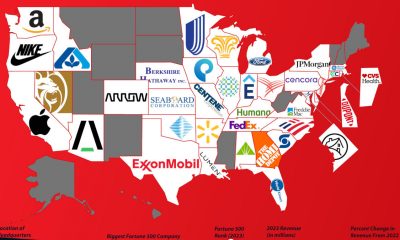
 Business Visualizations6 months ago
Business Visualizations6 months agoThe Biggest Fortune 500 Company in Every State
-
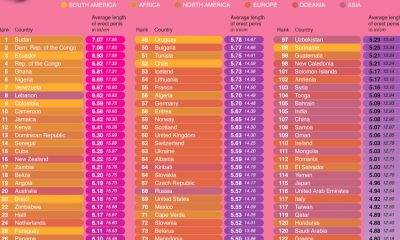
 Maps2 years ago
Maps2 years agoPenis Lengths Around the World
-
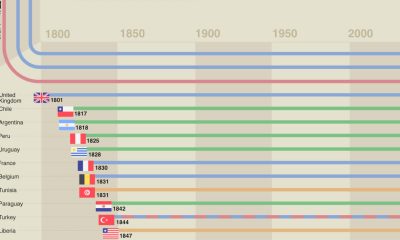
 Timelines2 years ago
Timelines2 years agoA History of the Oldest Flags in the World
-
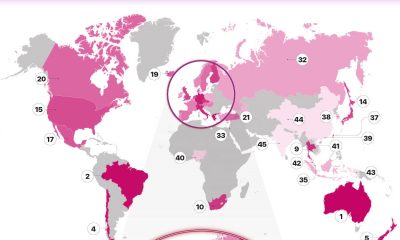
 Charts2 years ago
Charts2 years agoThe Most Promiscuous Countries in the World
-

 Business Visualizations2 years ago
Business Visualizations2 years agoHow Many Companies Does Elon Musk Own?

